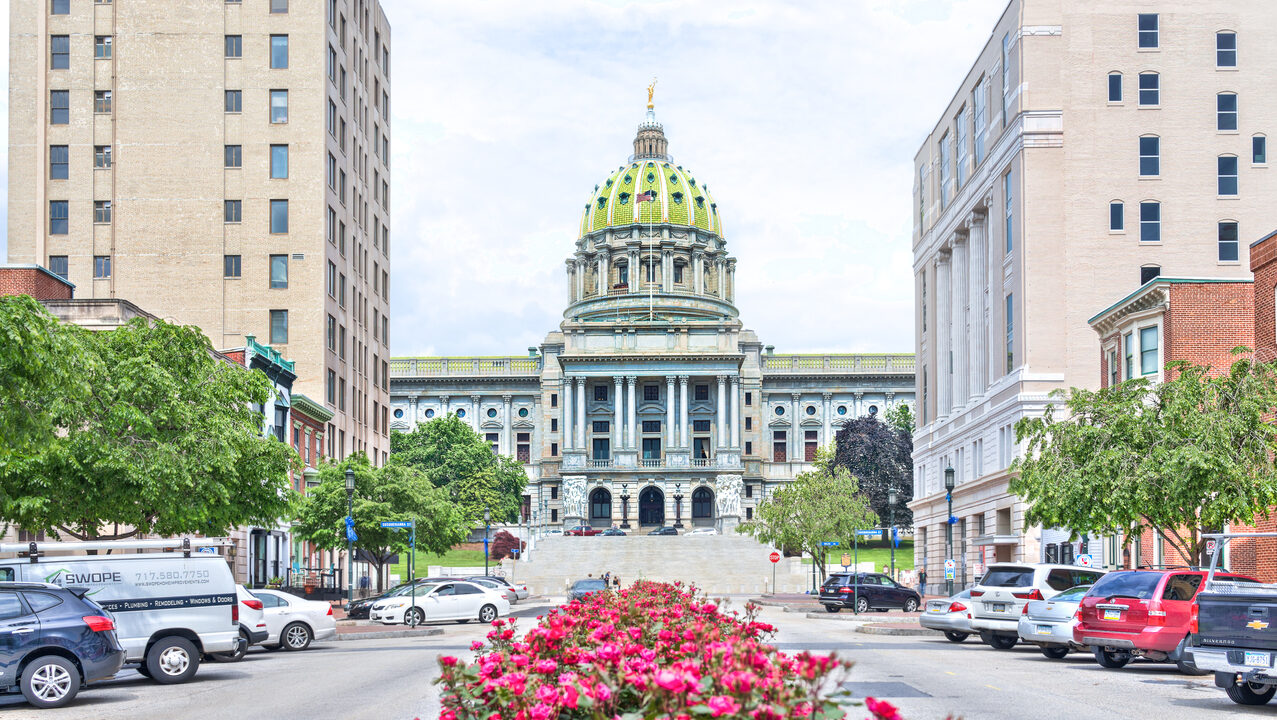Fact Sheet

Takeaways from the Unfinished 2023–24 State Budget
Summary
- The state budget remains unfinished. While Gov. Josh Shapiro signed off on the general appropriation bill (House Bill 611), authorizing more than $40 billion in state general fund spending, much of the funding remains in a fiscal limbo due to the budget impasse.
- Pennsylvania has no legislation yet to implement much of this spending, nor legislation directing the revenue side of the budget. Thus, while there is a “tracking run”—i.e., a spending list—there is no official “financial statement” or balance sheet.
- Assuming no additional appropriations, the final budget is on track to spend $900 million more than ongoing revenue by draining part of the General Fund balance.
Here are some key facts about the unfinished state budget, including how this impacts families, students, and businesses seeking greater opportunities and the overall competitiveness of Pennsylvania.
Spending
- HB 611, as signed by Shapiro, includes $44.97 billion in general fund spending. Notably, it also appropriates $43.3 billion from federal funds and $4.3 billion from state special funds.[1]
- Should no additional appropriations bills pass, this represents a 2.1 percent increase in total appropriations from last year’s enacted budget.
- The partial budget spends $900 million more in ongoing expenses than the $44.07 billion in estimated general fund revenue.[2]
- The overspending requires draining part of the commonwealth’s $9 billion general fund balance but does not require tax hikes.
- The Independent Fiscal Office (IFO) projects larger budgets deficits in future if the state continues to spend more than ongoing revenue.
- Approximately $1.1 billion of this spending, including a large number of programs require enabling legislation.[3]
- These funds will be sequestered until implementation language in a fiscal code is passed.[4]
- Should the legislature fail to pass implementation language and funding for state-related universities, the budget will technically balance.
Expansion of Education Opportunity
- There is no school code.
- This means there is no increase for the Educational Improvement Tax Credit (EITC) and Opportunity Scholarship Tax Credit (OSTC) scholarship programs for the time being.
- HB 611 includes the largest ever increase for basic education for public schools, at $567 million more than last year.
- However, the lack of a school code also prevents the distribution of about $500 million in basic education funding and $100 million in Level Up funding.
Transfers to Other Funds
- There is no fiscal code.
- Under current law, $900 million would transfer to the state Rainy Day Fund, though the budget deal would have transferred $500 million.[5]
- Other fund transfers cannot happen without a fiscal code.
Regulatory and Permitting Reform
- There is no administrative code.
- Thus, there will be no regulatory or permitting changes.
State-Related Universities
- There is no 2023–24 funding for Penn State University, University of Pittsburgh, Temple University, or Lincoln University.
- This would represent a $597 million reduction in spending from last year.
Accelerating Business Tax Cuts to Make Pennsylvania “Open for Business”
- There is no tax code.
- Shapiro’s campaign proposal to accelerate the reduction of the corporate net income tax (CNIT) rate, legislation to expand Net Operating Loss provisions, and Shapiro’s proposed elimination of taxes on cell phone usage all await action.
Accelerating Medicaid Redetermination and Ensuring Program Integrity.
- There is no welfare code.
[1]Rep. Jordan A. Harris, House Bill 611, Pennsylvania General Assembly, Regular Session 2023–24, https://www.legis.state.pa.us/cfdocs/billinfo/billinfo.cfm?syear=2023&sind=0&body=H&type=B&bn=611; Rep. Jordan A. Harris, Senate Appropriations Committee Fiscal Note (House Bill 611), Pennsylvania General Assembly, Regular Session 2023–24, https://www.legis.state.pa.us/WU01/LI/BI/SFN/2023/0/HB0611P1811.pdf HB 611.
[2]Independent Fiscal Office, “Official Revenue Estimates for FY 2023–24,” June 2023, http://www.ifo.state.pa.us/download.cfm?file=Resources/Documents/Revenue_Estimate_2023_06.pdf.
[3]Commonwealth Foundation, “House Democrats Budget Bungle Leaves Programs with Funding,” July 27 2023, https://www.commonwealthfoundation.org/2023/07/27/house-democrat-budget-bungle/.
[4]Budget Secretary Uri Monson, Memo: Fiscal Year 2023–2024 General Appropriations Act Implementation, August 2, 2023, https://senatorpittman.com/wp-content/uploads/sites/96/2023/08/8.2.23-Memo-from-Budget-Secretary-Uri-Monson.pdf.
[5]Pennsylvania Act 176 of 1929, Article 18A requires 10 percent of surplus to be deposited in the budget stabilization reserve fund. Available at https://www.legis.state.pa.us/cfdocs/legis/LI/uconsCheck.cfm?txtType=HTM&yr=1929&sessInd=0&smthLwInd=0&act=176&chpt=17A.